Primary Projects Photography by: Zachary Balber
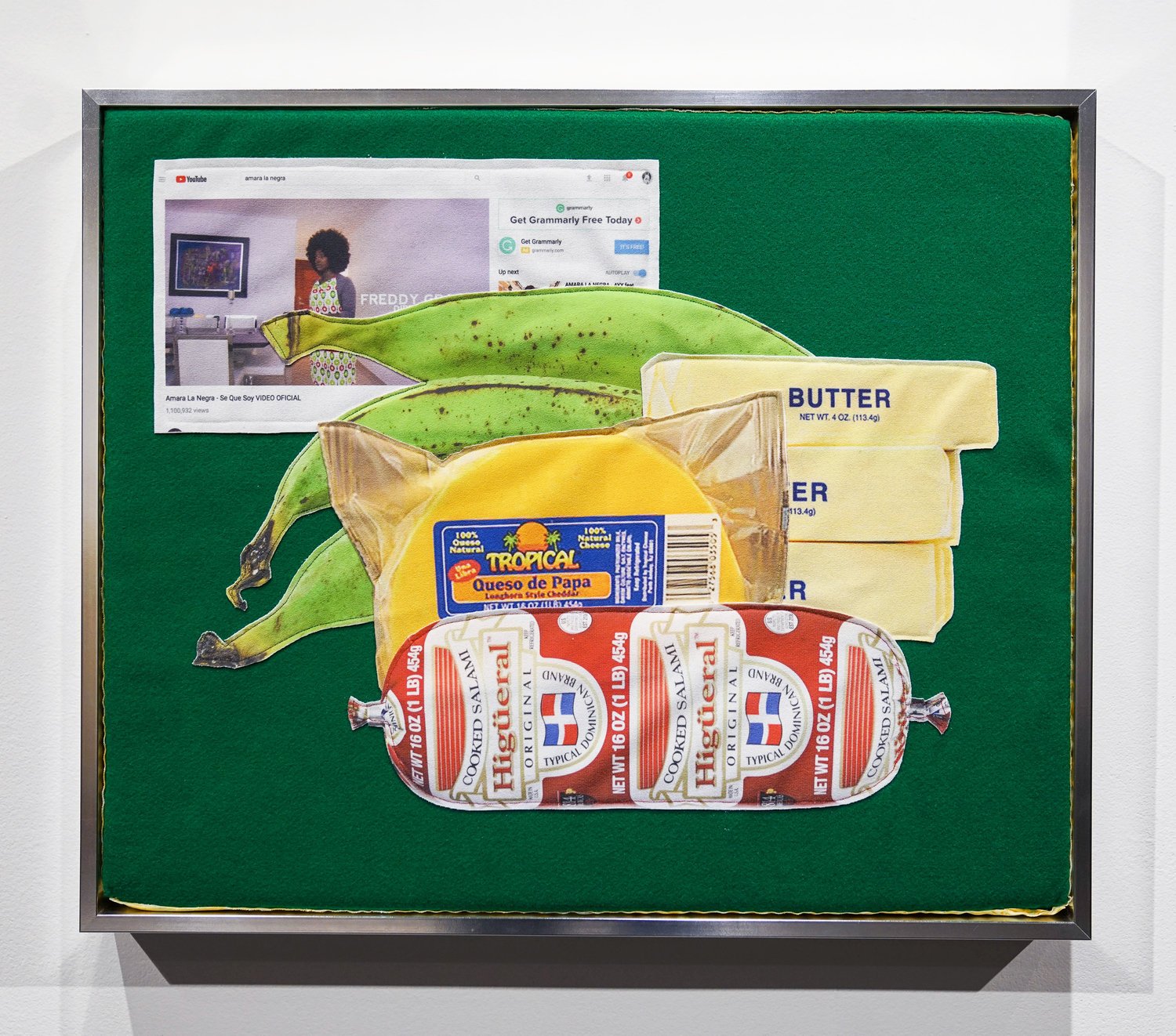
Lucia Hierro shares with us how the personal can be universal, leading us to understand a broader meaning of what art could be. She explores language, taste, culture, and addresses them with techniques that include digital media, collage, and felt constructions. I had the pleasure of asking her a few questions to get a closer look into her work.
Growing up in Washington Heights, studying at Yale, and beginning your career as a painter, how did you first become interested in using digital media, fabrics, and sculpture?
I started using the digital prints on fabric in grad school towards the end of 2012. A lot of the inquiry that goes on in grad classes feels a lot like therapy. I was tapping into some inherited inner child trauma for sure. My mom’s side of the family came to New York to work in a garment factory with my grandma. Though my mother enjoyed making clothes, there were a lot of privileges I had as a young woman that my mother didn’t. I always associated sewing with “the struggle” and avoided it for a long time. Once I made the connection between the work I was making (The New Yorker Fabric pieces) and the material, I knew I had touched upon something worth exploring. The New Yorker series was first done as collage work directly on the magazine pages. I was also playing around with felt, which had a strong relationship with child’s play and craft. The man who ran the digital media lab, Ken Lovell, suggested I try printing on a material he had that resembled felt. That’s when I decided to blow up the magazine pages and play with collaging felt on them. The rest of the series of works evolved from this.
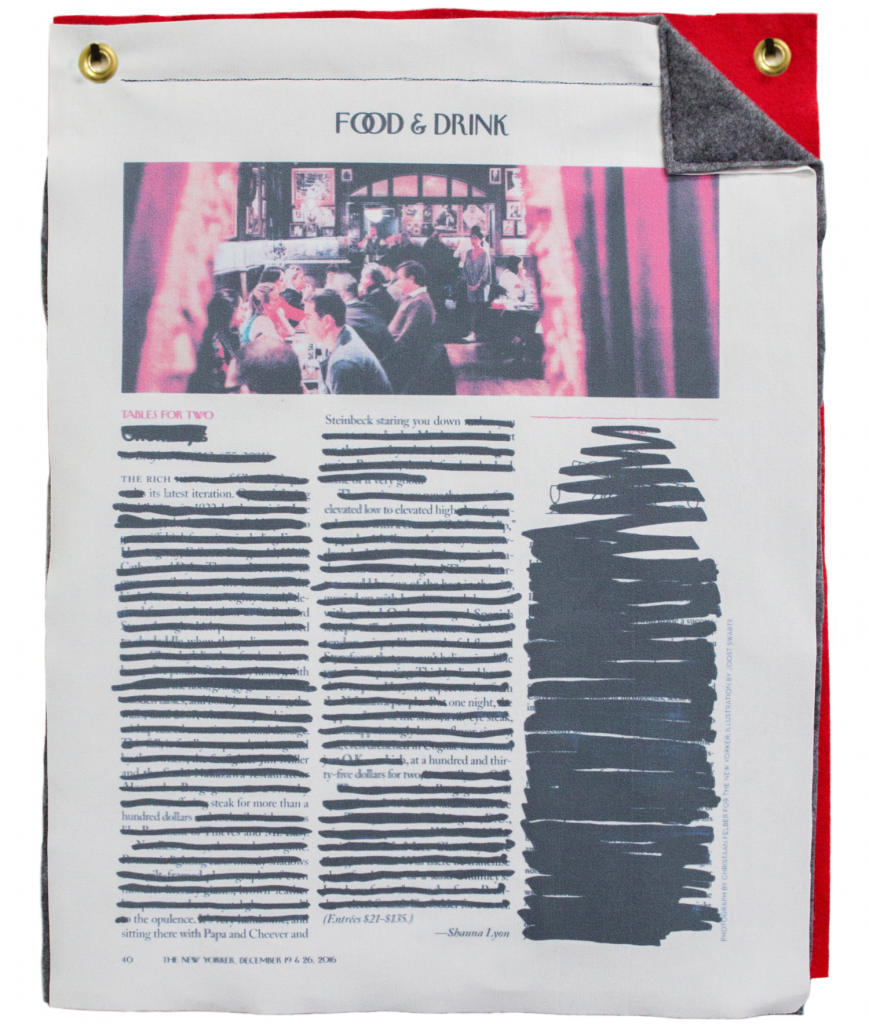
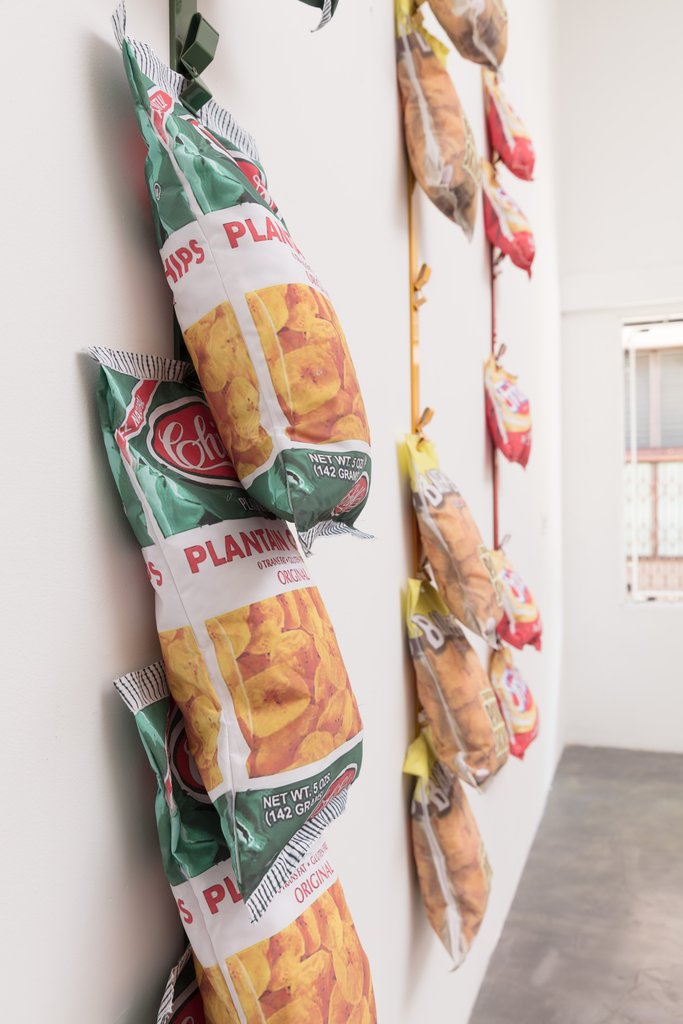
How has Donald Judd influenced your career? Feel free to mention any other artist who has also influenced you.
Ah-You’re referring to my “Racks” series. These objects were a direct response to the “Stacks”. He opened up ideas of what object making could be. He changed how artists thought about objects in relation to space and the viewer.
I was always drawn to his works and writings. I had this love-hate relationship with Judd, mostly because he had so many blind spots, I mean we all do. The work is undeniably intelligent, elegant, and revolutionary. I think the biggest way it’s influenced me is as a challenge- I’m in conversation, competition with his work- answering, challenging, poking fun at. He disliked Warhol and respected Lichtenstein… I’d have to agree but I live in the time of Instagram influencers so there’s no denying the prophetic nature of Warhol. Other artists: Oldenburg, Wesselman, Marisol Escobar, David Hammons.
How different is the reception of your work to the audience that will recognize the hyper-specific objects versus an audience that has not been in contact with them?
I think the difference comes in understanding the broader meanings of the work or solely latching on to what’s familiar or surface level. Which highlights the side of the work that is very much about the way people look at art or images in general. To some its a reflection of themselves and to others it’s a bigger conversation being had via a specific lens.
“I had this love-hate relationship with Judd, mostly because he had so many blind spots, I mean we all do. The work is undeniably intelligent, elegant, and revolutionary. I think the biggest way it’s influenced me is as a challenge- I’m in conversation, competition with his work- answering, challenging, poking fun at.”
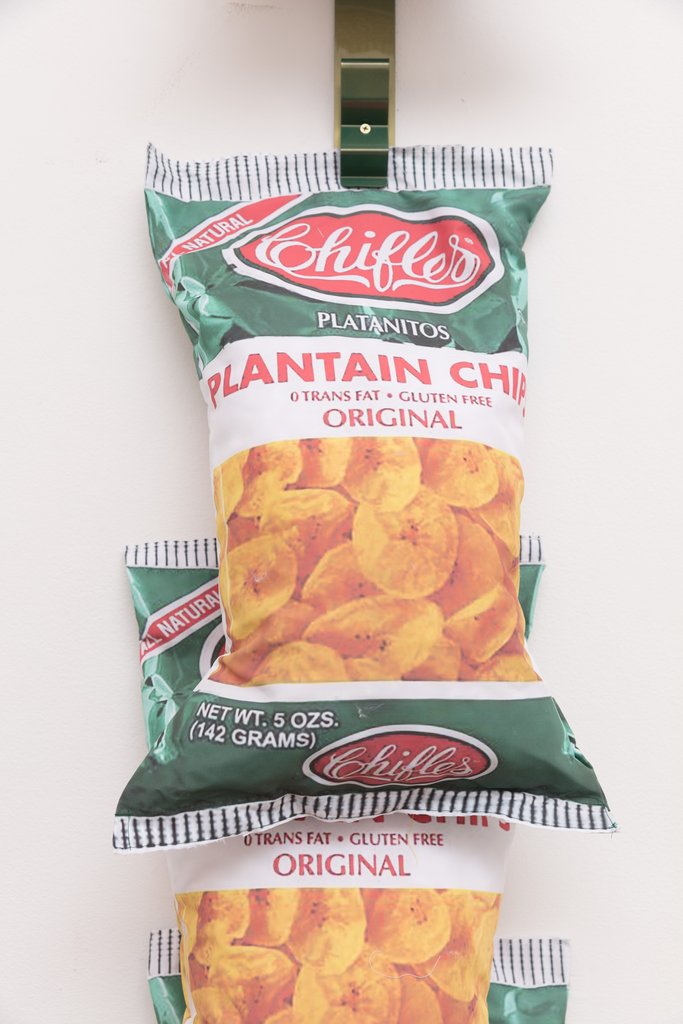
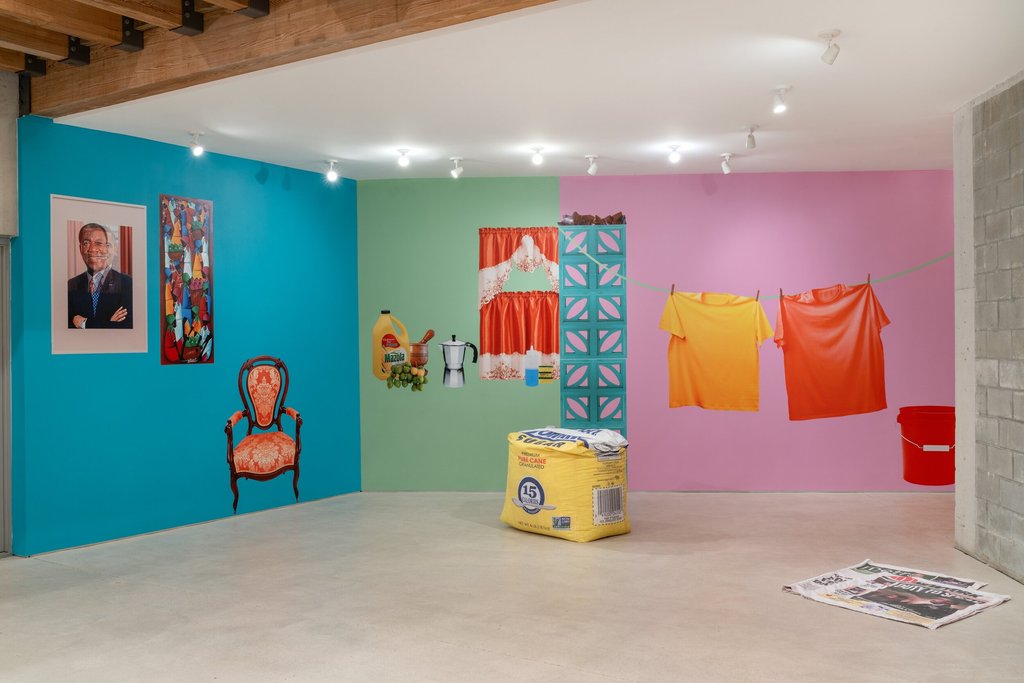
I understand that you come from a family of musicians. Does music play any role in your work?
Music is my love language. At this point, there’s no direct influence. I’d like to work with sound eventually. I have music on all the time in the studio and play a little guitar here and there to destress.
Would you say that part of your practice is to create relationships between objects? If so, what would you want your audience to get from these relationships?
Yeah, I think to figure out where their place is among them. What makes the objects foreign or familiar? How the histories embedded in the objects are connected to our intersecting narratives.
Tell us about your latest exhibition “Vecinos / Neighbors”. Why have you decided to present this in Miami?
I met the Primary Projects team while I was at Fountainhead residency in Miami a few years back. I got to spend a few months getting to know Miami. They had shown interest in the work and we followed each other’s projects. When they reached out about the solo show I was excited to work with them. Books Bischof and Cristina Gonzalez live upstairs from the gallery and Typoe lives nearby. They’re super connected to their community and had informed me that their neighbors were Dominican and Haitian. From the jump, I knew the title would be Vecinos. It all came together after that.
“To some it’s a reflection of themselves and to others it’s a bigger conversation being had via a specific lens.”
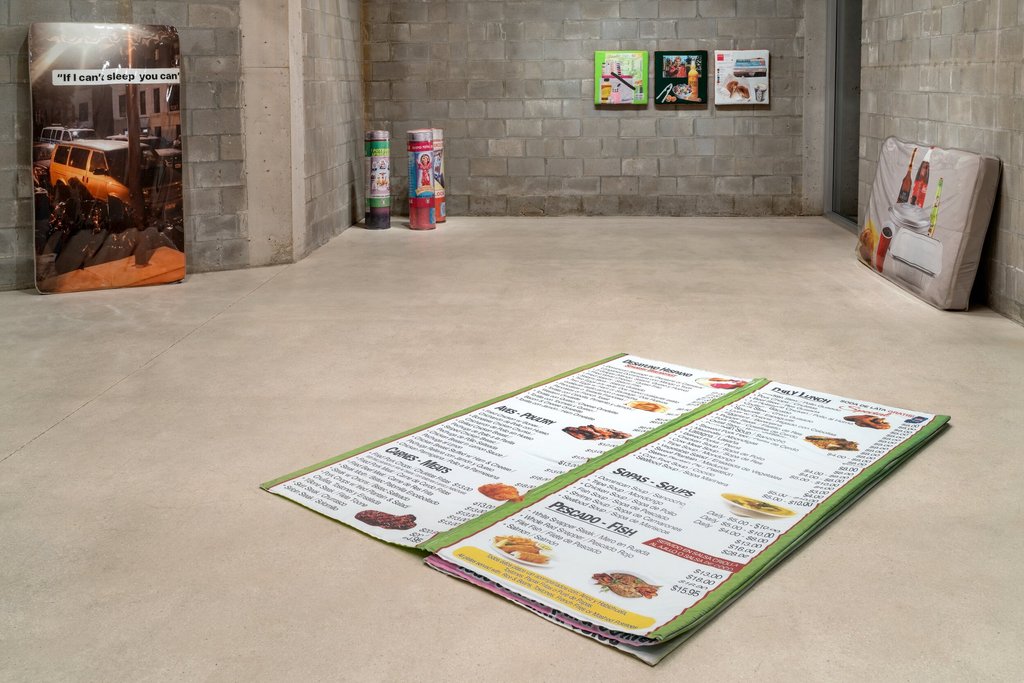
What is the role of language in your work?
Language is something I think about a lot. Indexicality as it pertains to semiotics. The cataloging of symbols as it relates to assigned value.
When you look into the history of art, I think it’s safe to say that women are not as present as they should be. Considering this, how do you navigate the art world? I sense there has been some change, but tell me if you think I’m wrong.
You’re right that they aren’t as present as they should be. I surround myself with people I respect and can learn from. Most importantly I have a firm idea of what I want for the work. I try to always move from that place.
If there was any advice you would give a younger artist with few resources, what would it be?
You can make with anything around you-including yourself (ie: performance art). Find ways to learn about the thing you love. I always tell kids I did homework and research from a friend’s computer in high school because I didn’t have one at home. Most younger folks have access to information or are close to someone who does-where there’s a will there’s a way. If you can find an artist to work with and learn from, do it.
